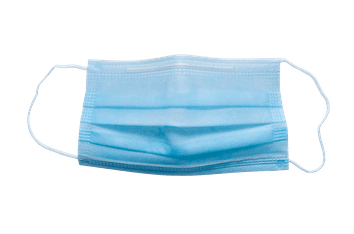


Precision medicine
Mobilizing Against Microbes
Mobilizing Against Microbes
The new chair of medicine positions Houston Methodist on the front lines of clinical and translational infectious disease research.
The new chair of medicine positions Houston Methodist on the front lines of clinical and translational infectious disease research.

Pandemics are on our collective mind. Just prior to removing COVID-19’s global emergency status, the World Health Organization (WHO) issued a call to action; a warning against complacency as the world recovers.
On April 26, 2023, WHO unveiled PRET: the Preparedness and Resilience for Emerging Threats Initiative, which provides guidance on integrated response planning for respiratory pathogens. And though PRET’s focus is respiratory pathogens, Dr. Tedros Adhanom Ghebreyesus, WHO Director-General, reminds us in a press release not to be too narrow-minded in our efforts, saying, “Just as health emergencies have impacts across many sectors, so must our preparedness and response efforts span sectors, disciplines and pathogens.”

Houston Methodist is uniquely qualified to join these efforts.

Eleftherios Mylonakis,
MD, PhD
With the addition of exemplary infectious disease experts to our ranks — including Eleftherios Mylonakis, MD, PhD, the recently recruited chair of the department of medicine — Houston Methodist is moving to the front lines of emerging infectious disease research.
Share this story
Before joining Houston Methodist, Mylonakis was Charles C.J. Carpenter Professor of Infectious Disease and Chief of Infectious Diseases at the Warren Alpert Medical School of Brown University where he was also Professor of Molecular Microbiology and Immunology and Assistant Dean for Longitudinal Medical Research.
A physician-scientist, Mylonakis’ clinical and laboratory research focuses on host and microbial factors of infection and identification of novel antimicrobial agents. He has eight patents, has edited five books, and published close to 500 scientific articles. His credentials are sterling but he’s here less to increase his personal research footprint, and more to guide clinical and translational research into a new paradigm that increases cooperation between disciplines as well as between clinicians, researchers and educators.
“We tend to keep clinical excellence, research and education within discrete silos, competing for resources, but if we let go of that and bring them together, we can catalyze their synergy, Mylonakis said. “This would increase opportunities to attract high-level talent and help practitioners and those throughout the system to obtain deeper job satisfaction.”
Mylonakis also brings a refreshing approach to solving scientific questions. Rather than letting the tools at his disposal define his scientific inquiries, he lets urgent scientific questions guide finding the tools needed to answer them. “This forces us to use a variety of techniques or to integrate different techniques in new ways, from molecular microbiology and clinical trials to bioinformatics and biostatistics. Whatever it takes to answer the question,” Mylonakis said.
Mylonakis’ integrative mindset is central to his infectious diseases and immunology research. Instead of differentiating infectious pathogens by species, he distinguishes them by pathology: organisms that developed virulence and pathogenesis within the environment vs those whose pathology developed within humans. His interests tend toward the environmentally driven pathogens. “Most bacteria and fungi belong to the former and their pathogenic traits were developing in the environment millennia before humans became important parts of the biomass,” he said.
As mammals hadn’t yet become a significant part of the biomass when fungi and bacteria were developing their pathogenic characteristics, it follows that their virulence factors evolved to better enable their success within their environment. These include host-pathogen interactions and environmental stressors that led to adaptation through pathogenesis.
For example, fungi lived on plants, trees and flowers, and from them took nourishment. In exchange, the fungi enabled the plants to share nutrition with their neighbors and made them more resistant to soil-borne pathogens. When insects became ubiquitous, fungi that survived adapted to living on or in insects.
“To study fungi pathogenesis, we use small invertebrate model hosts such as microscopic nematodes or insects, and similar factors and host immune responses observed in those models happen with human infection,” said Mylonakis. “Some traits may be more sophisticated, but they are evolutions of the traits that were there before humans.”
Recent events demonstrate that fungi are more of a threat to global health than previously thought. Mylonakis’ arrival at Houston Methodist well-positions us to advance the work.
Up until now, humans haven’t been as susceptible to fungal infection as one might expect, for two reasons. First, healthy immune systems can usually clear fungi before they cause disease. For example, fungal spores are abundant but most people who breathe in fungal spores don't get sick. However, in those with weakened immune systems, some fungal infections can become serious. “It's remarkable how our innate immunity is able to fight fungal infections, but if you're immunosuppressed and inhale Aspergillus spores, they can cause a devastating disease,” said Mylonakis.
Today, more people than ever are immunocompromised. “We have an ever-increasing number of people who are immunosuppressed: more transplant recipients, more people receiving cancer treatments, more biologics being used to treat rheumatologic diseases and others. These are wonderful treatments but, of course, they also make a lot of people immunosuppressed,” said Mylonakis.
Fungi and the slow-moving pandemic of antimicrobial resistance are not as dramatic and we don't pay as much attention, but by 2050 WHO predicts that the deaths from antimicrobial resistant pathogens, including fungi, will be a top cause of mortality
Eleftherios Mylonakis, MD, PhD
Chair of the department of medicine
Viral epidemics and pandemics can also cause health conditions that increase the risk of contracting a fungal infection. In 2021, at least 45,000 people in India with COVID-19 contracted a secondary fungal infection, mucormycosis, known as black fungus, resulting in more than 4,500 reported deaths.
The second reason is that factors such as climate change and global movement of people and products, increase the chance to establish infections in humans. It’s unsurprising, then, that we are observing an increase in different infections, including fungal infections, in humans. As a result, we are seeing an increasing number of symptomatic fungal infections in those with healthy immune systems.
For example, a recent blastomycosis outbreak at the Billerud paper mill in Escanaba, Michigan has, as of May 19, 2023, caused symptomatic infection in 118 workers with 14 hospitalizations and one death. Blastomycosis transmission is not person to person — one must breathe in the spores — so an outbreak of this scale is highly unusual. The infected workers must have been exposed on the job to the same materials containing Blastomyces spores.
While the investigation into the outbreak may reveal that some, or all, of those who needed hospitalization, as well as the worker who lost his life to the infection, were immunocompromised, it’s unlikely that all 118 infected were thus afflicted. Yet even those not needing hospitalization were symptomatic and need long-term therapeutic intervention to clear the infection. Successful resolution of all infections remains to be seen. This is a shift in the paradigm, and it’s not the only one.
In a case report published online March 13, 2023, the world’s first case in which a human was infected with Chondrostereum purpureum, the fungus that until now, only caused disease in plants was reported. A 61-year-old Indian plant mycologist had flu-like symptoms and difficulty swallowing, with no history of immunocompromise. Physicians were unable to identify the infection, so samples were sent to a WHO fungi reference and research center, where the fungus culprit was identified through its DNA.
The man was treated with surgical drainage of an abscess and long term oral antifungal therapy with follow up over two years. News broke of the infection when their case study was published.
Then, during the week of May 12, 2023, the CDC released information about the first incidence of drug-resistant ringworm in the US in its Morbidity and Mortality Weekly Report. According to officials, in February 2023, a dermatologist in New York City notified the health department of two unrelated patients diagnosed with severe tinea that didn’t improve with oral terbinafine. Suspecting Trichophyton indotineae infection — the drug resistant ringworm causing an epidemic in South Asia — samples were sent to the New York State Department of Health for analysis. Sanger sequencing followed by phylogenetic analysis identified the isolates as T. indotineae.
PARASITIC FUNGUS, CORDYCEPS SP, INFESTS AND KILLS INSECT HOST. MANU NP. SOUTHEAST PERU
Getty Images
These infections come on the heels of the popular video game-turned-TV show, “The Last of Us,” which takes its inspiration from the notorious zombie-ant fungus, Ophiocordyceps unilateralis, AKA cordyceps. And while cordyceps is currently incapable of infecting humans, these recent fungi firsts demonstrate that the global health threat posed by fungi is becoming more urgent.
Mylonakis points out that even before these new threats, there’s been a slow-moving, yet dangerous, fungal pandemic caused by Candida auris that’s been ongoing for 14 years. “C. auris is very resistant to existing antifungals. It is a very strong example of a real and present danger from a fungus that seemingly changed its epidemiology and pathogenicity.”
Mylonakis published an editorial on Candida biofilms earlier this year and it’s an excellent overview of the relevant ongoing research in that field.
Candida auris fungi, emerging multidrug resistant fungus, 3D illustration
Getty Images
In an effort to get ahead of the growing public health threat posed by invasive fungi, on October 25, 2022, WHO published a report highlighting the first-ever fungal priority pathogens list including the 19 fungi that pose the greatest public health threat. This report is designed to advance research and policy interventions needed to develop a successful global strategy for preparedness and response to fungal infections and antifungal resistance.
In an Interview, WHO Assistant Director-General, Antimicrobial Resistance Hanan Balkhy, MD, said, “Emerging from the shadows of the bacterial antimicrobial resistance pandemic, fungal infections are growing, and are ever more resistant to treatments, becoming a public health concern worldwide.”
While “The Last of Us” remains a bit far-fetched, the truth is nonetheless frightening. Fungal pathogens are becoming more common even in those with healthy immune systems and more resistant to treatment. With a handful of classes of antifungal medicines currently available, few candidates in the clinical pipeline, and a distinct lack of widely available, affordable and accurate rapid diagnostics, research in these areas grows even more critical.
Mylonakis has no intention of overlooking emerging health threats. “Fungi and the slow-moving pandemic of antimicrobial resistance are not as dramatic and we don't pay as much attention, but by 2050 WHO predicts that the deaths from antimicrobial resistant pathogens, including fungi, will be a top cause of mortality,” he said.
Houston Methodist is well-positioned to contribute crucial research on fungi and other emerging infectious diseases that, otherwise, could very well be the last of us.
Heather Lander, PhD
June 2023




